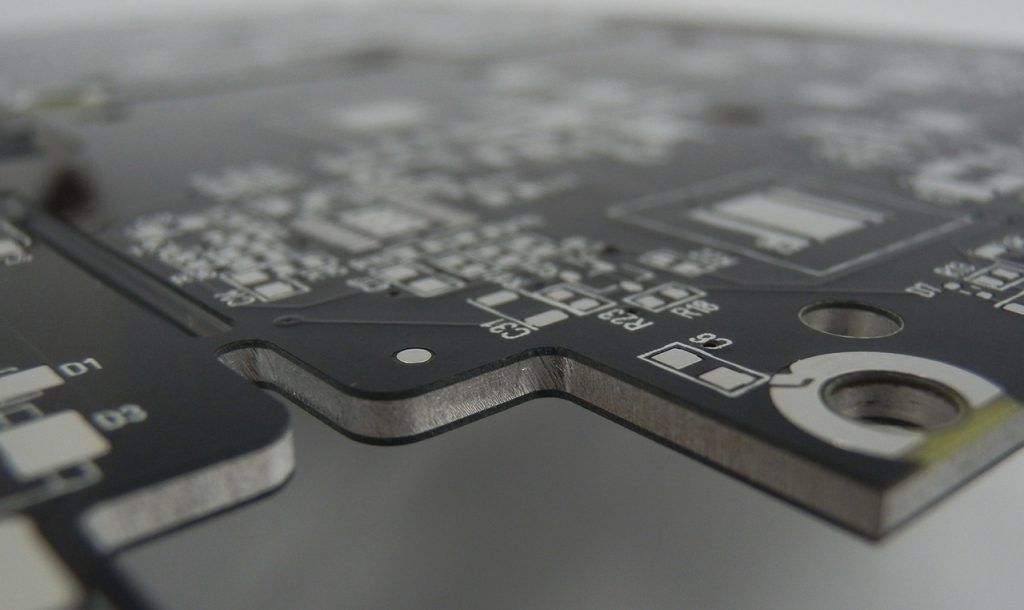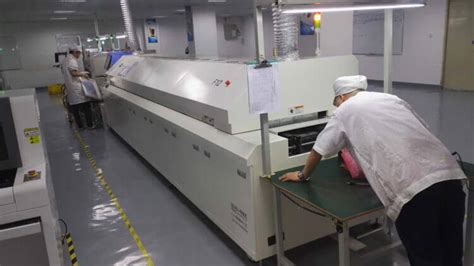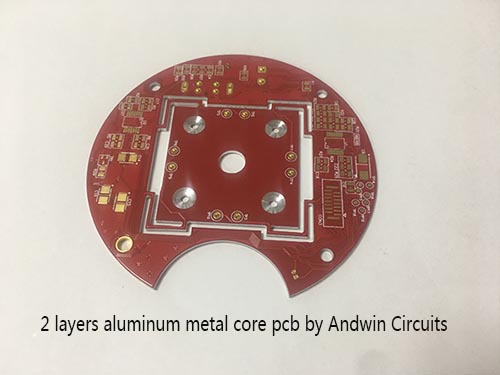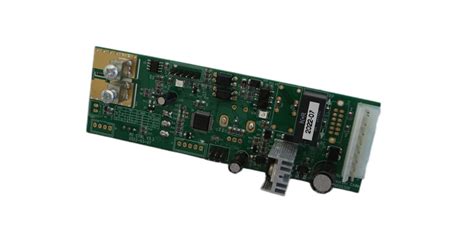Metal core pcb manufacture
Advantages Of metal core pcb manufactureIn High-Power Applications
Metal core printed circuit boards (MCPCBs) have emerged as a pivotal innovation in the realm of high-power applications, offering a multitude of advantages that make them indispensable in various industries.
One of the primary benefits of MCPCBs is their superior thermal management capabilities.
Unlike traditional PCBs, which often struggle with heat dissipation, metal core PCBs incorporate a metal substrate, typically aluminum or copper, that efficiently conducts heat away from critical components. This enhanced thermal conductivity ensures that electronic devices operate within safe temperature ranges, thereby prolonging their lifespan and improving overall reliability.
In addition to their exceptional thermal performance, metal core PCBs also exhibit remarkable mechanical stability.
The metal substrate provides a robust foundation that can withstand mechanical stresses and vibrations, which are common in high-power applications. This durability is particularly advantageous in automotive, aerospace, and industrial sectors, where electronic systems are frequently exposed to harsh operating conditions. Consequently, the use of MCPCBs can significantly reduce the risk of mechanical failure, ensuring consistent performance and reducing maintenance costs.
Furthermore, the integration of metal core PCBs in high-power applications contributes to enhanced electrical performance.
The metal core acts as a ground plane, which can help to minimize electromagnetic interference (EMI) and improve signal integrity. This is especially critical in applications where precise signal transmission is paramount, such as in telecommunications and medical devices. By mitigating EMI, MCPCBs facilitate the development of more reliable and efficient electronic systems, thereby meeting the stringent demands of modern technology.
Moreover, the design flexibility offered by metal core PCBs cannot be overlooked.
These PCBs can be manufactured in various configurations, including single-layer, double-layer, and multi-layer designs, to accommodate the specific requirements of different applications. This versatility allows engineers to optimize the layout and performance of electronic circuits, ensuring that they meet the unique demands of high-power environments. Additionally, the ability to incorporate thermal vias and other heat-dissipating features further enhances the design possibilities, making MCPCBs a highly adaptable solution for a wide range of applications.
Another significant advantage of metal core PCBs is their cost-effectiveness in the long run.
While the initial manufacturing costs may be higher compared to traditional PCBs, the long-term benefits often outweigh these expenses. The improved thermal management and mechanical stability of MCPCBs lead to fewer failures and longer operational lifespans, resulting in lower replacement and maintenance costs. This cost-efficiency is particularly beneficial for industries that rely on high-power electronic systems, as it translates to substantial savings over time.

In conclusion, the advantages of metal core PCBs in high-power applications are manifold. Their superior thermal management, mechanical stability, enhanced electrical performance, design flexibility, and long-term cost-effectiveness make them an ideal choice for a wide range of industries. As technology continues to advance and the demand for high-power electronic systems grows, the adoption of metal core PCBs is likely to become even more prevalent. By leveraging the unique benefits of MCPCBs, manufacturers can develop more reliable, efficient, and durable electronic systems that meet the rigorous demands of modern applications.
Key Materials Used In Metal Core PCB Manufacturing
Metal core printed circuit boards (PCBs) are a specialized type of PCB that incorporate a metal substrate, typically aluminum or copper, to enhance thermal management and mechanical stability. The key materials used in the manufacture of metal core PCBs play a crucial role in determining their performance, reliability, and suitability for various applications. Understanding these materials is essential for anyone involved in the design and production of metal core PCBs.
The primary material in metal core PCBs is the metal substrate itself.
Aluminum is the most commonly used metal due to its excellent thermal conductivity, lightweight nature, and cost-effectiveness. Aluminum substrates are particularly favored in applications where efficient heat dissipation is critical, such as in LED lighting, power electronics, and automotive systems. Copper, although more expensive, offers superior thermal and electrical conductivity compared to aluminum. Copper substrates are often used in high-performance applications where maximum heat dissipation and electrical performance are required.
In addition to the metal substrate, the dielectric layer is another key material in metal core PCB manufacturing.
The dielectric layer serves as an insulating barrier between the metal core and the conductive copper traces. This layer must possess high thermal conductivity to facilitate efficient heat transfer from the components to the metal core. Common materials used for the dielectric layer include thermally conductive epoxy, polyimide, and ceramic-filled polymers. These materials are selected based on their thermal performance, mechanical properties, and compatibility with the metal substrate.
The copper foil used for the conductive traces is another critical material in metal core PCBs.
The copper foil is laminated onto the dielectric layer and patterned to form the electrical circuits. The thickness of the copper foil can vary depending on the current-carrying requirements of the PCB. Thicker copper foils are used in high-power applications to handle larger currents and reduce resistive losses. The quality of the copper foil, including its purity and surface finish, directly impacts the electrical performance and reliability of the PCB.
Solder mask and silkscreen are additional materials used in the manufacturing process.
The solder mask is a protective layer applied over the copper traces to prevent oxidation, short circuits, and solder bridging during assembly. It also provides mechanical protection and enhances the overall durability of the PCB. The silkscreen, on the other hand, is used to print component labels, reference designators, and other markings on the PCB surface. Both the solder mask and silkscreen materials must be compatible with the underlying layers and withstand the thermal and mechanical stresses encountered during PCB operation.
Furthermore, the choice of adhesives and bonding materials is crucial in metal core PCB manufacturing.
These materials are used to bond the dielectric layer to the metal substrate and ensure a stable and reliable assembly. The adhesives must exhibit strong adhesion, thermal stability, and compatibility with the other materials used in the PCB. Epoxy-based adhesives are commonly used due to their excellent bonding properties and thermal performance.
In conclusion, the key materials used in metal core PCB manufacturing, including the metal substrate, dielectric layer, copper foil, solder mask, silkscreen, and adhesives, each play a vital role in determining the performance and reliability of the final product. The selection of these materials must be carefully considered based on the specific requirements of the application to ensure optimal thermal management, electrical performance, and mechanical stability. Understanding the properties and interactions of these materials is essential for the successful design and production of high-quality metal core PCBs.
Thermal Management Techniques In Metal Core PCBs
Metal core printed circuit boards (MCPCBs) have become increasingly popular in various industries due to their superior thermal management capabilities. These PCBs are designed with a metal core, typically aluminum or copper, which serves as a heat sink to dissipate heat away from critical components. Effective thermal management is crucial in applications where high power and heat generation are prevalent, such as in LED lighting, power supplies, and automotive electronics. To understand the thermal management techniques employed in metal core PCBs, it is essential to explore the materials, design considerations, and manufacturing processes that contribute to their efficiency.
One of the primary materials used in MCPCBs is aluminum, chosen for its excellent thermal conductivity and lightweight properties.
Copper is another material often used, offering even higher thermal conductivity but at a higher cost and weight. The choice of material depends on the specific thermal requirements and budget constraints of the application. The metal core acts as a thermal path, conducting heat away from the heat-generating components and distributing it across the board to prevent localized hotspots.
In addition to material selection, the design of the MCPCB plays a critical role in thermal management.
The placement of components, the thickness of the metal core, and the layout of thermal vias are all factors that influence heat dissipation. Components that generate significant heat are strategically placed near the metal core to maximize heat transfer. Thermal vias, which are holes filled with conductive material, are used to create a direct thermal path from the heat source to the metal core. These vias enhance the thermal conductivity of the PCB, allowing for more efficient heat dissipation.
The manufacturing process of MCPCBs also incorporates several techniques to optimize thermal management.
One such technique is the use of a dielectric layer with high thermal conductivity. This layer, typically made of a thermally conductive polymer, is placed between the metal core and the circuit layer. It serves to electrically insulate the circuit while facilitating heat transfer to the metal core. The thickness and thermal conductivity of the dielectric layer are carefully selected to balance electrical insulation and thermal performance.
Another important aspect of MCPCB manufacturing is the lamination process.
During lamination, the metal core, dielectric layer, and circuit layer are bonded together under heat and pressure. This process ensures a strong mechanical bond and optimal thermal contact between the layers. Any air gaps or voids in the lamination can significantly reduce thermal conductivity, so precise control of the lamination parameters is essential.
Furthermore, surface treatments and finishes can enhance the thermal performance of MCPCBs. For instance, applying a thermal interface material (TIM) between the MCPCB and the heat sink can improve heat transfer efficiency. TIMs are designed to fill microscopic air gaps and irregularities on the surface, providing a more effective thermal path. Additionally, surface finishes such as solder mask and conformal coatings can protect the PCB from environmental factors while maintaining thermal performance.
In conclusion, the thermal management techniques employed in metal core PCBs are multifaceted, involving careful material selection, strategic design, and precise manufacturing processes. By leveraging the inherent thermal conductivity of metal cores, optimizing component placement, and utilizing advanced manufacturing techniques, MCPCBs offer a robust solution for managing heat in high-power applications. As technology continues to advance, the demand for efficient thermal management solutions will drive further innovations in MCPCB design and manufacturing, ensuring their continued relevance in various industries.

Innovations In Metal Core PCB Design And Fabrication
Metal core printed circuit boards (PCBs) have emerged as a pivotal innovation in the electronics industry, particularly in applications requiring efficient heat dissipation. The design and fabrication of metal core PCBs have undergone significant advancements, driven by the increasing demand for high-performance electronic devices. These innovations are not only enhancing the functionality of electronic components but also extending their lifespan by effectively managing thermal loads.
One of the primary materials used in metal core PCBs is aluminum, chosen for its excellent thermal conductivity and lightweight properties.
Aluminum-based PCBs are particularly favored in LED lighting, automotive, and power electronics applications. The metal core serves as a heat sink, drawing heat away from critical components and dissipating it efficiently. This capability is crucial in preventing overheating, which can lead to component failure and reduced reliability.
In addition to aluminum, copper is another material frequently used in metal core PCBs.
Copper offers superior thermal conductivity compared to aluminum, making it ideal for applications with higher thermal demands. However, the choice between aluminum and copper often depends on the specific requirements of the application, including cost considerations and weight constraints. The selection process involves a careful balance between thermal performance, mechanical strength, and economic factors.
The fabrication process of metal core PCBs involves several intricate steps, starting with the preparation of the metal substrate.
The substrate is typically coated with a dielectric layer, which provides electrical insulation while maintaining thermal conductivity. This dielectric layer is crucial in ensuring that the electrical circuits are isolated from the metal core, preventing short circuits and ensuring reliable performance. Advanced materials and techniques are continually being developed to enhance the properties of this dielectric layer, further improving the overall performance of metal core PCBs.
Following the preparation of the substrate, the next step involves the application of the copper circuitry.
This is achieved through processes such as photolithography and etching, which allow for precise patterning of the copper traces. The accuracy of these processes is vital in ensuring that the final PCB meets the required specifications and performs reliably in its intended application. Innovations in photolithography and etching techniques have significantly improved the resolution and precision of the copper circuitry, enabling the production of more complex and compact designs.
Another critical aspect of metal core PCB fabrication is the drilling and plating of vias, which are essential for establishing electrical connections between different layers of the PCB.
The drilling process must be carefully controlled to avoid damaging the metal core and dielectric layers. Advances in laser drilling technology have enabled the creation of smaller and more precise vias, enhancing the overall performance and reliability of the PCB.
Moreover, the assembly and soldering processes for metal core PCBs require specialized techniques to accommodate the unique thermal properties of the metal core.
The use of high-temperature soldering materials and controlled reflow processes ensures that the components are securely attached without compromising the integrity of the PCB. Continuous improvements in soldering materials and techniques are contributing to the enhanced durability and performance of metal core PCBs.
In conclusion, the innovations in metal core PCB design and fabrication are playing a crucial role in meeting the growing demands of high-performance electronic applications. The advancements in materials, fabrication techniques, and assembly processes are enabling the production of PCBs that offer superior thermal management, reliability, and performance. As technology continues to evolve, further innovations in metal core PCB design and fabrication are expected, driving the development of even more advanced electronic devices.






